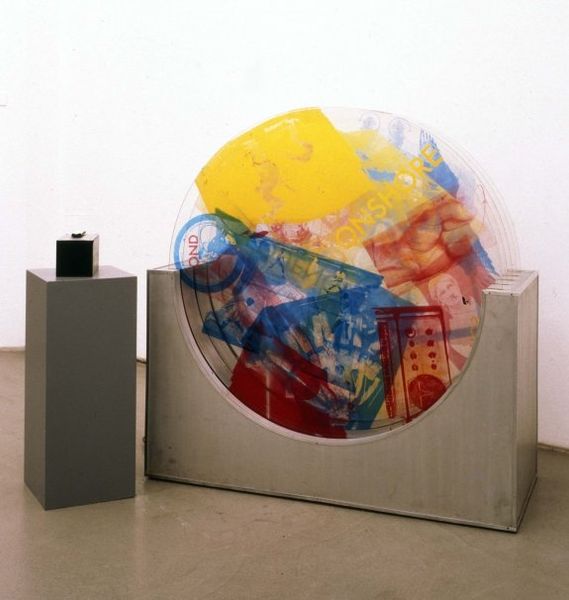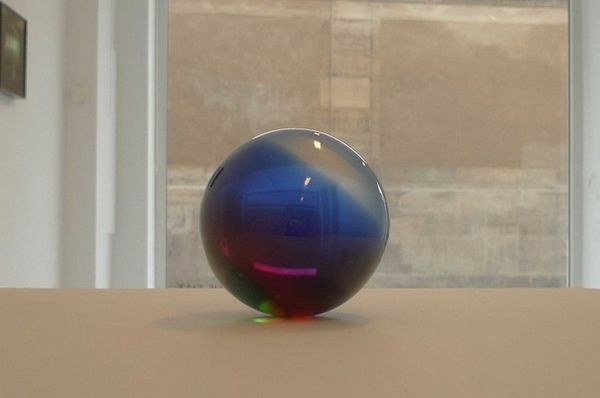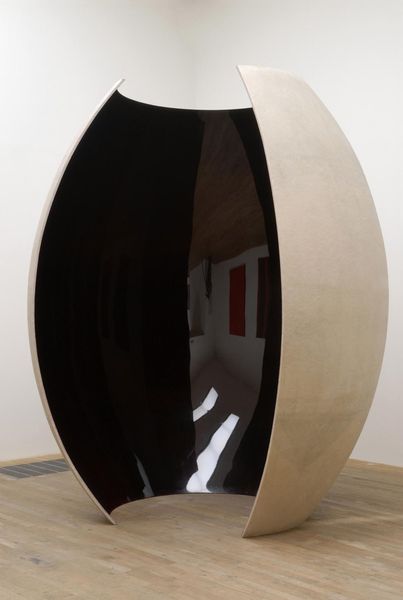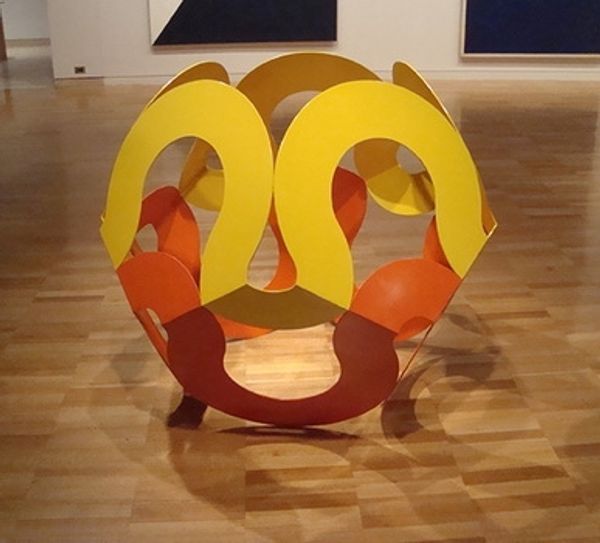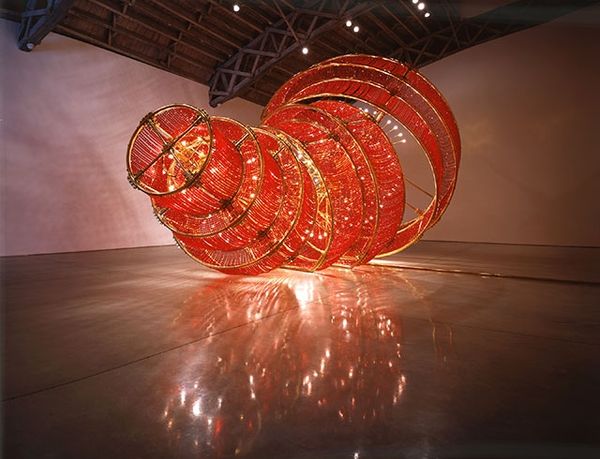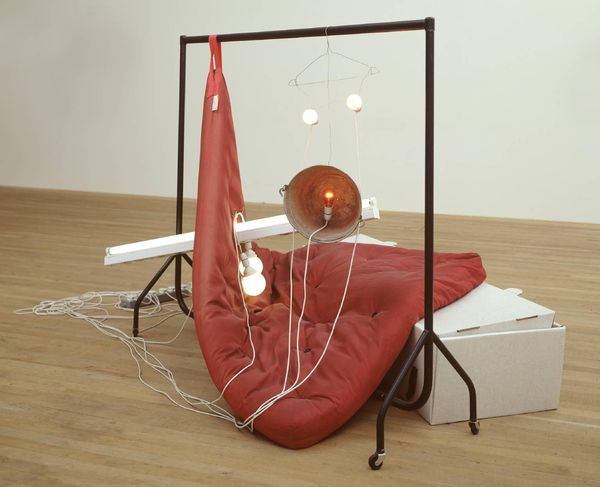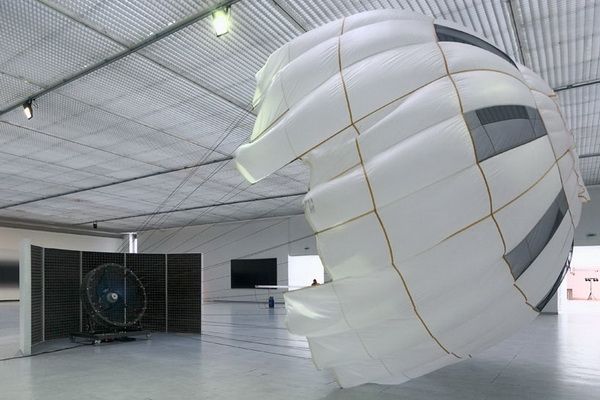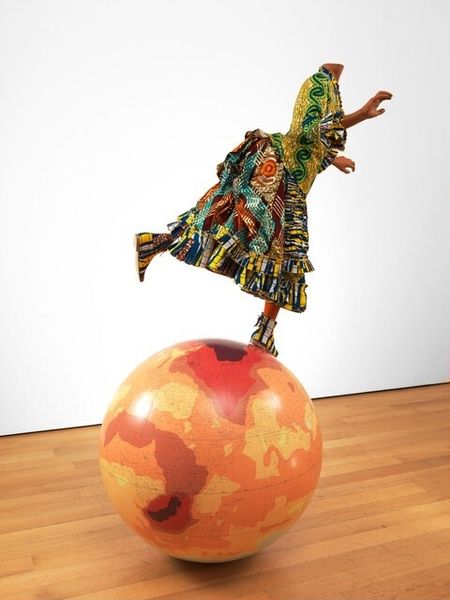
mixed-media, ephemeral-art, installation-art
#
mixed-media
#
ephemeral-art
#
installation-art
Copyright: Gerard Fromanger,Fair Use
Curator: We’re looking at Gérard Fromanger’s “Souffle de Mai,” created in 1968. It’s described as a mixed-media installation, also touching on the ideas of ephemeral art. Editor: The first thing that strikes me is the intense, almost overwhelming redness of the installation. It really commands the space. And then there's the semi-transparent effect which makes it so people both inside and outside are equally distorted. It’s unsettling, but also… fascinating. Curator: Indeed. It's crucial to understand that 1968, the year this was made, was a year of immense social and political upheaval, especially in France. Fromanger was very involved in those movements, and this piece speaks directly to the idea of being contained by the establishment, the suffocating effects of societal norms. Editor: Ah, containment, yes, the visual impression aligns perfectly with that interpretation. The bubble, if we can call it that, has this feeling of trapping everything inside its ruby shell while the exterior has little to no way to connect. Do you think the fact that Fromanger combined so many media had to do with any political statement? Curator: It certainly lends itself to one! It suggests a breaking of boundaries, rejecting the traditional art forms. Also, consider how the title translates, "Breath of May." That's not just the air, that also speaks to the spirit of the '68 uprisings—the desperate need to take hold of power through popular uprising. The installation creates a physical manifestation of being at once together but completely separate. Editor: That combination of presence and alienation is palpable. You are suggesting there may be two layers here, the internal rebellion, and the external oppression, all coming into a full package of social analysis! How else do you believe the social setting marked Fromanger’s production? Curator: He went on to collaborate with Godard and other key figures in the New Wave cinema and continued making art that engaged critically with politics. For him, art was inseparable from social action and cultural critique. “Souffle de Mai” is very telling because it shows that thinking at the beginning of his career. Editor: This exploration brings an essential dimension of this art piece into clarity. It really prompts a deeper conversation about our positions inside contemporary political frameworks, and to assess to what extent this piece makes its purpose and history shine through in the work's visuality. Curator: Yes. Ultimately, Fromanger prompts us to consider the enduring connections between art, society, and personal liberty. Editor: Agreed. It has become evident that beyond its striking visual qualities, it is a space where material becomes an echo of history itself.
Comments
No comments
Be the first to comment and join the conversation on the ultimate creative platform.

